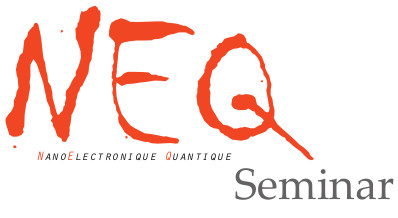- Accueil
- Institut Néel
- Équipes de recherche
- Pôles & Services techniques
- Travailler à l’institut
- Partenariats
- Actualités
- Agenda
- Annuaire

Zoom link: https://univ-grenoble-alpes-fr.zoom.us/j/91808901596?pwd=UWZ2cml2N1VBOEZBenk0d3RJek9rdz09
Résumé/Abstract : Diodes are key elements for electronics, optics, and detection. Their evolution towards low dissipation electronics has lead to the hybridization with superconductors (S) and the realization of non-reciprocal transport of both quasiparticles and Cooper pairs. That occurs when both spatial inversion and time-reversal symmetries are broken. Here, we review both effects comparing their efficiencies and basic principles. The quasi-particle diode is a superconducting tunnel junction with zero conductance in only one direction. The direction selective propagation of the charge has been obtained through the broken electron-hole symmetry induced by the spin selection of a ferromagnetic tunnel barrier made of a EuS thin film separating a superconducting Al and a normal metal Cu layer. It achieves a large rectification of up to 40%. On the other hand, supercurrent diodes made with hybrid S/spinorbit/ S Josephson Junctions or with two-dimensional Rashba superconductors have been demonstrated to show zero resistance in only one direction. We describe the equation of the supercurrent diode effect in a generic formalism that may inspire novel devices based on helical magnetism induced in conventional superconductors.
